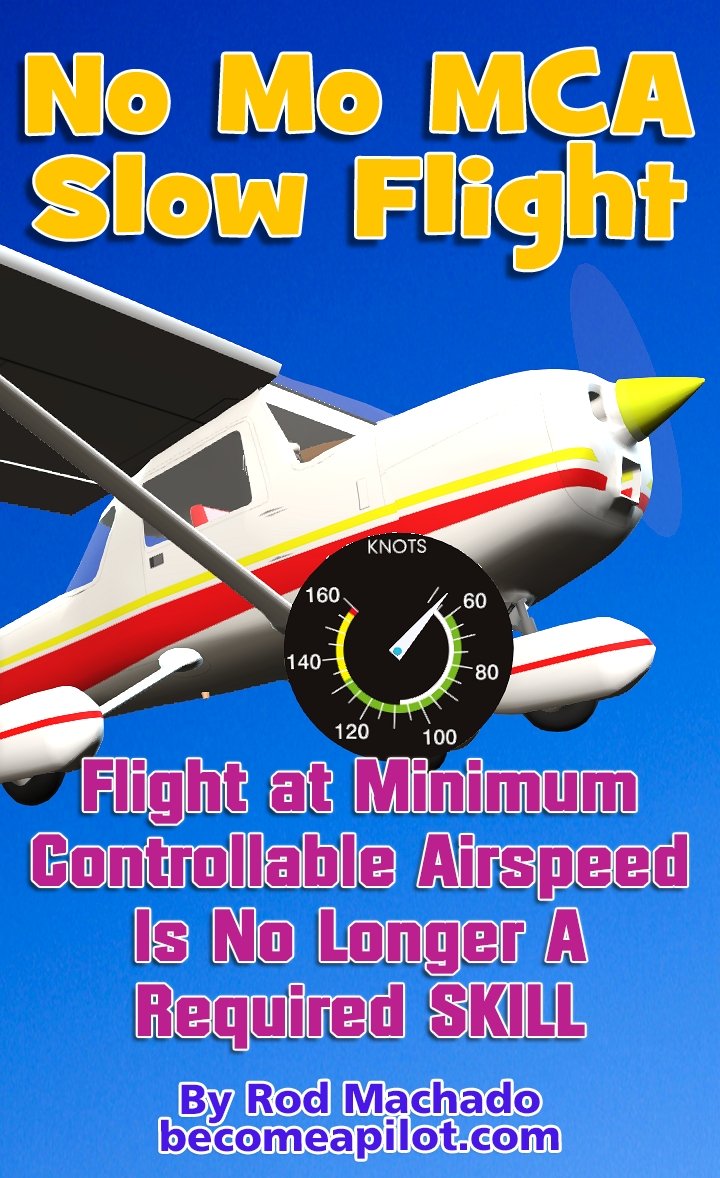
In its 1965 Flight Training Handbook, the FAA dedicated over two pages of text to explain the concept of flight at minimum controllable airspeed (MCA). Today, the most recent edition of the FAA’s How to Fly an Airplane Handbook offers no discussion whatsoever on MCA. If you have the impression that the FAA doesn’t want pilots to practice flight at MCA, then you are correct.
It turns out that the FAA now considers practicing slow flight at MCA to be less beneficial (if not harmful) to a pilot’s development. The FAA’s reasoning is that flight at MCA is typically accompanied by the presence of an activated stall horn or light. As the FAA sees it, any extended exposure to a stall warning that’s not accompanied by the immediate application of stall recovery procedures makes a pilot more vulnerable to a stall/spin accident.
To handle its critics, the FAA went so far as to say that students will experience flight at MCA when they practice stalls. Apparently, the few seconds of exposure students experience just before an airplane stalls is a sufficient educational "substitute" for actual practice at MCA. Hmm, I wonder why the FAA didn't take that (il)logic a bit further and argue that, since airplanes touch down at or near stall speed, pilots should forgo stall training. After all, each landing is both MCA and stall practice. Yes, that's a goofy notion but it's no more strange than the FAA's rationale for avoiding training at MCA. The folks who make this policy believe that a stall horn (or stall light) is more valuable to a pilot's survival than experience and skill in the MCA environment. Whether that makes any sense at all is irrelevant. The FAA's policy, delivered by fiat, is what it is, and it's official.

For this reason, the Airman Certification Standards (ACS) now requires that an applicant demonstrate slow flight in the following manner: Establish and maintain an airspeed at which any further increase in angle of attack, increase in load factor, or reduction in power, would result in a stall warning (e.g., airplane buffet, stall horn, etc.).
The FAA is quite clear that slow flight is to be performed without any stall warning present. Therefore, you can fly as slow as desired on your checkride as long as it doesn’t involve the activation of a stall horn or light, much less an experience of stall buffet (in case your airplane isn’t equipped with a stall horn or light).
To be helpful, the FAA suggests that one way to determine the target airspeed at which to demonstrate slow flight is to “...slow the airplane to the stall warning when in the desired slow flight configuration, pitch the nose down slightly to eliminate the stall warning, add power to maintain altitude and note the airspeed.” This will place the airplane a few knots above the speed at which the stall warning activates, or upwards of nine to 10 knots above the airplane’s actual stall speed. Given that the ACS allows a pilot to fly up to +10 knots in excess of the selected speed chosen for a slow flight demonstration, it’s possible that a pilot could be demonstrating slow flight at a speed above the recommendation many airplane manufacturers suggest for a normal approach.
Before this change took place, pilots regularly demonstrated slow flight at MCA with the stall horn/light activated or with the stall buffet present. This meant that these pilots were just a few knots above actual stall speed—an activity that requires a much deeper understanding of what’s happening in the pre-stall regime. Pilots practicing flight at MCA learned about how the airplane handles as it approached a stall. These pilots also learned about the five major clues that typically precede a stall, thereby helping them identify when they are approaching stall territory. For this reason I would hope all flight instructors would still teach flight at MCA while simultaneously prepping their students to fly at higher speeds during checkride demonstrations of slow flight.


11 comments
Rod,
You and I have both tried to educate the FAA on how unwise this train-wreck of a policy really is. And you and I have discussed it between ourselves and with many others; to no avail. The FAA has repeatedly lowered standards of performance required during training and testing in response to a perceived problem. In this case the problem is loss of control; so the FAA fix is to give pilots less training in critical portions of the flight envelope which often precede LOC accidents. It’s so backwards, I would be completely bumfuzzled if I had not seen this tactic before. The only way I make sense of this is knowing the federal government often does things that show ignorance and lack of effective problem solving skills. True aviation educators will continue to speak and teach the truth. But one worries about how these actions will affect pilot competency on an industrial scale. Thanks for raising this issue yet again.
Regards
Charlie McD